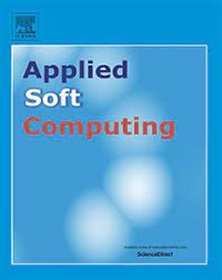Covariance matrix adaptation driven dynamic multi-population colony predation optimizer: Insights, qualitative analysis, and constrained engineering optimization
IF 7.2
1区 计算机科学
Q1 COMPUTER SCIENCE, ARTIFICIAL INTELLIGENCE
引用次数: 0
Abstract
The Colony Predation Algorithm (CPA) is a straightforward population-based algorithm with few control parameters. Nevertheless, its initial design has limitations, including a tendency for local optimization and limited search ability, leading to subpar solutions. In response to these concerns, a novel approach named the Covariance Matrix Adaptive-Driven Dynamic Multi-Population Colony Predation Algorithm (ICPA) is introduced. Qualitative analysis experiments are carried out to determine ICPA's feasibility, including historical search trajectory analyses and balanced diversity assessments. Additionally, a comparative study involving 11 well-known algorithms, 11 state-of-the-art algorithms, and four champion algorithms (EBOwithCMAR, SPS_L_SHADE_EIG, LSHADE_cnEpSi, and LSHADE) using the IEEE CEC 2014 test suite confirmed its superior optimization capabilities. Statistical tests consistently rank ICPA first on the Friedman test (with scores of 2.17, 3.37, and 2.27) and demonstrate its outperformance of state-of-the-art algorithms in at least 40 % of tested functions in the Wilcoxon sign-rank test. The Bonferroni Dunn post-hoc statistical test reveals that ICPA significantly outperforms 61.53 % of the compared algorithms. Additionally, the efficacy of ICPA was evaluated on seven constrained real-world engineering problems, encompassing gear train design, speed reducer design, multi-disc clutch and brake design, cantilever beam design, three-bar truss design, I-beam design, and combined economic emission dispatch. The experimental outcomes underscore the potential of ICPA in addressing practical engineering challenges, thereby validating its optimization effectiveness. Utilizing extensive experimentation and comparative analyses, the feasibility, superiority, and effectiveness of ICPA have been substantiated, encompassing both qualitative and quantitative perspectives.
求助全文
约1分钟内获得全文
求助全文
来源期刊

Applied Soft Computing
工程技术-计算机:跨学科应用
CiteScore
15.80
自引率
6.90%
发文量
874
审稿时长
10.9 months
期刊介绍:
Applied Soft Computing is an international journal promoting an integrated view of soft computing to solve real life problems.The focus is to publish the highest quality research in application and convergence of the areas of Fuzzy Logic, Neural Networks, Evolutionary Computing, Rough Sets and other similar techniques to address real world complexities.
Applied Soft Computing is a rolling publication: articles are published as soon as the editor-in-chief has accepted them. Therefore, the web site will continuously be updated with new articles and the publication time will be short.
 求助内容:
求助内容: 应助结果提醒方式:
应助结果提醒方式:


